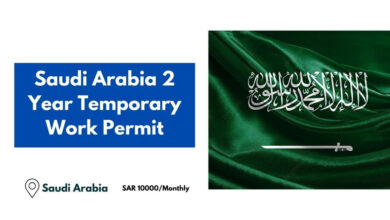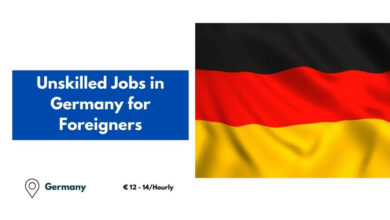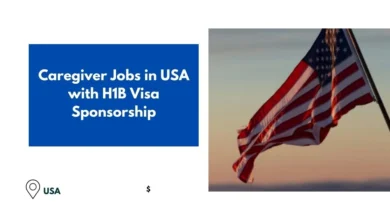USA Student Visa 2024 – Apply Now
The appropriate information can provide a clearer understanding of the process for obtaining a US Think About Visa. Universal students who are pursuing higher education in the United States are required to obtain an F-1 visa, which is permissible for students who are enrolled in academic programs. The primary stages involve obtaining a Frame I-20 from your preferred institution, paying the SEVIS fee, and arranging a visa meeting at the nearest U.S. international haven. A smoother application process is guaranteed by early arrangement.
In 2024, obtaining a USA Think About Visa provides access to a variety of social experiences and world-class education. Examining within the United States provides me with access to a dynamic campus life, cutting-edge research opportunities, and top-tier colleges. Additionally, Discretionary Viable Preparation (Select) is available to students worldwide, enabling them to gain significant employment experience in their field of study. This visa not only enhances career prospects globally but also promotes scholarly development.
Check Also: USA Work Visa Sponsorship Jobs – Apply Now
Types of Visas
- F-1 Visa: This is the most common student visa for international students who are enrolled in academic programs at academic institutions in the United States. It enables students to pursue full-time studies at accredited colleges and vocational training programs. The F-1 visa also permits students to pursue Discretionary Viable Preparation (Pick) post-graduation, which enables them to secure joint employment experience in their field of study.
- J-1 Visa: This visa is intended for trade students who are interested in social trade programs that are endorsed. It encompasses a variety of educational activities, such as inquiries about programs, apprenticeships, and high school and college courses. The Scholastic Preparing (AT) program may be an option for J-1 visa holders, as it allows for practical preparation that is pertinent to their academic pursuits.
- M-1 Visa: The M-1 visa is intended for students attending professional or specialized institutions in the United States. In contrast to the F-1 visa, M-1 visa holders are prohibited from working while pursuing their education. This visa is ideal for students who are interested in non-academic or professional preparation programs, including mechanical thinking, specialized courses, and other specialized disciplines.
Requirements for USA Student Visa
- Candidate acceptance to an Understudy and Trade Guest Program (SEVP)-approved institution is contingent upon the school’s approval. The Frame I-20 will serve as the foundation for the visa application process at this institution.
- SEVIS Fee Payment: When scheduling your visa appointment, it is necessary to pay the Student and Exchange Visitor Information System (SEVIS) fee, which has been mandatory for some time. This fee is crucial for the maintenance of the SEVIS database, the monitoring of students, and the trading of visitors within the United States.
- Visa Application Completion: Submit the online nonimmigrant visa application and the DS-160 form. Ensure that all information is precise and corresponds to the topics of interest in your Frame I-20.
- Valid International Identification: Your visa must be valid for a minimum of six months beyond the anticipated duration of your stay in the United States. In the event that it is not, you may need to recharge it prior to applying for the visa.
- Visa Meet: Arrange and attend a visa meet at the nearest U.S. international haven or department. Prepare to respond to inquiries regarding your academic objectives, financial situation, and affiliations with your home country.
- Financial Proof: Provide evidence of sufficient funds to cover the duration of your studies, including living expenses, educational expenses, and other expenses. This may encompass budgetary affidavits, grant letters, and bank articulations.
- Supporting Archives: Compile additional records, including scholarly transcripts, standardized test scores (such as TOEFL or IELTS), and a letter of intent or explanation of purpose.
- Passport-Size Photographs: Submit passport-sized photographs in accordance with the guidelines outlined in the visa application.
Required Documents
The following may be required when applying for an understudy visa in the United States:
- A substantial visa that is valid for a minimum of six months beyond your intended duration of stay in the United States (unless prohibited by country-specific agreements).
- Admission to an institution that has been affirmed by the SEVP and the issuance of your Frame I-20
- SEVIS application fee installment
- The Frame DS-160 affirmation document and the nonimmigrant visa application
- Within the requested organization, your photograph and the corresponding number are included.
- When selecting Discretionary Down to Earth Preparing (Select), you will be required to submit an application to USCIS for a Business Authorization Document (EAD) in addition to the Shape I-20.
- Additional records that may be necessary include:
- Transcripts, confirmations, degrees, or certificates are examples of academic preparation records.
Your ability to maintain your living expenses during your time in the United States is supported by evidence of sufficient reserves. This may encompass:
- Bank statements
- Financial undertaking by support to cover your settlement and living costs
- A grant program
Application Process for USA Student Visa:
- Acceptance by a SEVP-Approved institution: First, you must be recognized by a Student and Trade Guest Program (SEVP)-approved institution in the United States. At that time, the institution will issue you a Frame I-20.
- The SEVIS I-901 penalty can be paid online at the SEVIS website. This expense is necessary to ensure the security of your data within the Student and Exchange Visitor Information System (SEVIS).
- Completion of the DS-160 Form: Completion of the online nonimmigrant visa application form, DS-160. Confirm that all information is accurate and retain the confirmation page with the barcode.
- Pay the Visa Application Expense: The current non-refundable visa application fee is $185. Please retain the receipt.
- Arrange a Visa Meet: Arrange a meeting at the nearest U.S. international haven or department. Arrange the meeting in accordance with the potential for a change in the hold-up time.
- Acquire the Necessary Documents Compile all essential reports, including:
- I-20 Form
- Affirmation page for DS-160
- A passport that is valid for a minimum of six months beyond the anticipated duration of your stay.
- Passport-sized photographs that are recent
- Charge receipt for visa application
- SEVIS charge installment receipt
- Evidence of financial assistance
- Standardized exam scores and academic transcripts
- Letter of intent or statement of purpose
- Attend the Visa Meet: Bring all necessary documentation to the visa meet. Prepare to respond to inquiries regarding your financial situation, academic objectives, and affiliations with your home country.
- Visa Preparation: Subsequent to the meeting, your application will be prepared. Your visa will be returned with the interior branded if it is endorsed. This may require a few days to a few weeks, contingent upon the intricacy of the case.
- Be prepared for takeoff: Upon receiving your visa, organize your travel and guarantee that you possess all necessary documentation for entry into the United States.
Visa Fee:
- SEVIS Charge: The Understudy and Trade Guest Data Framework (SEVIS) charge is $350 for F-1 and M-1 visa candidates and $220 for J-1 visa candidates. This expense is required to be paid at the time of scheduling your visa interview.
- Visa Application Fee: The visa application fee (DS-160 form) is $185 and is non-refundable. This fee is necessary for the processing of your visa application and must be paid regardless of whether the visa is granted.
Processing Time
- I-20 Form Issuance: The Shape I-20 is typically obtained within a few weeks of acknowledgment from a SEVP-approved institution.
- SEVIS Charge Installment: This can be completed promptly through the online platform.
- Visa Application (DS-160): The DS-160 frame may require several hours to be completed online. Upon submission, you will be able to organize your visa interview.
- Visa Meet Arrangement: The duration of the wait for a meet arrangement varies depending on the season and the location, ranging from several days to a few weeks. For specific hold-up times, consult the website of the U.S. government office or department.
- Visa Processing: The process of preparing a visa typically requires a few days to a few weeks following the meeting. It includes regulatory management and foundational assessments.
Benefits of USA Student Visa
- Access to World-Class Education: The United States is home to numerous prestigious universities and institutions that offer a diverse array of programs, advanced research facilities, and high-quality education. A degree from the United States is highly regarded on a global scale, frequently providing access to future career opportunities.
- Employment Opportunities: The F-1 student visa enables students to work part-time on campus during their studies and, in certain instances, participate in Optional Practical Training (OPT) and Curricular Practical Training (CPT). OPT enables graduates to acquire practical work experience in their respective fields for a maximum of 12 months, with an additional 24 months for STEM graduates.
- Pathway to Permanent Residency: A student visa can serve as the initial stage toward a work visa and, ultimately, permanent residency for individuals who intend to remain in the United States following their academic pursuits. Many students are eligible to apply for H-1B visas after concluding their OPT, provided that they obtain employment with a sponsoring employer.
- Diverse Cultural Exposure: The United States is a melting pot of cultures, providing students with the opportunity to develop cross-cultural skills, encounter individuals from various countries, and experience a diverse environment. These skills are highly valuable in a globalized job market.
- Advanced Research and Innovation Opportunities: In areas such as technology, healthcare, engineering, and social sciences, universities in the United States frequently establish themselves as leaders in research and innovation. Numerous institutions offer financial assistance and resources to students who are enthusiastic about conducting research.
- Support Services for International Students: Dedicated international student offices are frequently established by U.S. universities to assist international students in adjusting to life in the United States. They offer assistance with visa regulations, academic support, career services, and cultural acclimatization.
- Flexible Education System: The United States’ educational system is renowned for its adaptability, which enables students to select from a diverse selection of majors and minors, partake in interdisciplinary studies, and switch fields. This adaptability enables students to customize their education to align with their professional objectives.
- Networking and Career Development: Students are afforded the opportunity to develop their professional skills by participating in industry conferences, job fairs, internships, and alumni connections while studying in the United States.
- Scholarships and Financial Aid: Numerous universities in the United States provide scholarships and financial aid to international students on the basis of merit or need. This can reduce the cost of studying in the United States for individuals who meet the eligibility criteria.
Visa Duration
- F-1 Visa: A substantial visa that is valid for the duration of your academic program and includes a 60-day grace period. Discretionary Viable Preparing (Select) allows for a maximum of 12 months of employment following graduation, with a 24-month extension for STEM disciplines.
- J-1 Visa: This visa is significant due to the duration of the trade program and includes a 30-day grace period for travel or flight. However, the program’s most substantial modifications persist.
- M-1 Visa: A substantial visa that is valid for the duration of the professional program, which is up to one year, with the potential for an extension of up to three years. After the program has been completed, a 30-day beautification period is implemented.
Conclusion
Universal students seeking exceptional education and diverse social experiences should consider the United States as one of their highest priorities. A vast array of academic programs, cutting-edge investigative offices, and some of the world’s most prestigious universities are all available to students who are studying in the United States. The United States offers a distinctive and stimulating experience that can facilitate personal growth and career advancement due to its dynamic economy, diverse social characteristics, and breathtaking natural landscapes.
Frequently Asked Questions:
How do I get a student visa in the USA?
The SEVP-approved school will issue you a Form I-20. After you receive the Form I-20 and register in SEVIS, you may apply at a U.S. Embassy or Consulate for a student (F or M) visa. You must present the Form I-20 to the consular officer when you attend your visa interview.
How much money is required for an USA student visa?
How much bank balance is required for a US study visa? A. There is no set amount declared by the US government for international students, but it is recommended to have a minimum USD 18,000 in their accounts. This is because US Immigration is assured that the applicant can complete one year of study easily in the US.
Is IELTS required for a USA student visa?
Students need to achieve a minimum IELTS score to study and even for a USA student visa. The IELTS Band Requirements for the USA study visa are 6.5 overall with 6.0 scores in each section.



